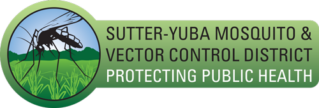Ticks are blood-sucking arthropods and are vectors of a wide variety of diseases such as Lyme Disease, Rocky Mountain spotted fever, Tularemia, and Anaplasmosis. Ticks are not insects. They are actually arachnids, which means they have 8 legs and are more closely related to spiders than they are to flies or mosquitoes.
Hard Ticks versus Soft Ticks:
Hard ticks have a “plate” on their back that is called a scutum. The scutum covers most of the dorsal surface of the male. It is much smaller in the female allowing her to expand enormously as she feeds and becomes engorged with blood. Adult males and females have different coloration and females are somewhat larger than males. Their mouthparts are visible when the tick is viewed from above. Two common hard ticks in California are the Western black-legged tick (Ixodes pacificus) and the American dog tick (Dermacentor variabilis).
Soft ticks appear to have a wrinkled body; lack a scutum; and the males and females are very close to the same size. Viewing a soft tick from above would give someone the impression that soft ticks do not have mouthparts. However, their mouthparts are located on the underside of the body so that the front portion of the tick’s body hides the mouthparts.
What is the Life Cycle of a Tick?
A tick has four stages: egg, larva, nymph and adult. Adult ticks are most active in the fall and early spring, when days are cooler and humidity is higher. They sit on the tips of long blades of grass or on the ends of branches of shrubs waiting for a host to come by (this is known as questing). Ticks do not fly, jump, run or drop from trees. They wait on vegetation with their legs outstretched hoping to snag a ride with their next host. They can be found along hiking trails or animal trails. Once a tick finds a place to bite on its host’s skin, they insert their mouthparts into the skin and slowly draw blood into their body. They use protein rich blood to help develop their eggs. Most bites occur between May and August because people are more active outdoors during those months. Nymphal ticks are usually present from early spring to late summer. They must take bloodmeals in order to grow. Nymphal ticks are responsible for most Lyme disease transmission.
How Can Tick Bites be Prevented?
– Avoid areas where ticks are most prevalent.
– Stay on marked trails while hiking.
– Use an insect repellant with at least 20% DEET on exposed skin and clothing.
– Treat clothing (including socks and boots) with permethrin.
– Wear long sleeves when possible.
What is the Best Way to Remove a Tick?
To remove a tick from your skin, grasp it with a tissue or preferably with a good pair of tweezers. Try to grasp the tick near its head, as you do not want parts of the tick to break off or crush and stay in your skin. Pull the tick slowly, but firmly, straight out from the skin. The tick should eventually come loose. If not, a trip to your doctor’s office might be in order. Never handle a tick with or your bare hands, especially a crushed one. After removal, wash the area with warm soapy water. Also, if you have a rash, take pictures of it. Early recognition of Lyme disease is very important, especially in relation to treatment options.
What Should I Know About the Different Species of Ticks? 
What is the Public Health Risk of Ticks?
Ticks are vectors of a wide variety of disease-causing organisms. Some diseases transmitted by each group of ticks are:
Hard Ticks
– Lyme disease
– Rocky Mountain spotted fever
– Anaplasmosis
– Colorado tick fever
– Tularemia
Soft Ticks
– Tick-borne relapsing fever
Learn more about Lyme Disease here.
